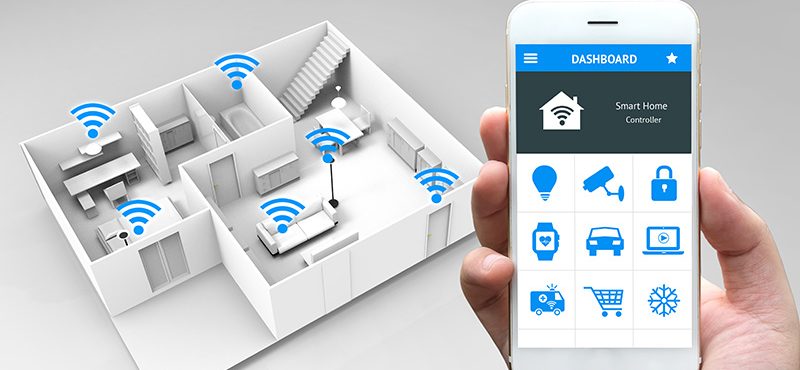The unprecedented COVID pandemic turned a trend toward remote work into a flood – 58% of Americans now have the opportunity to work from home at least one day a week, and 35% can telework the full week. With this mass turn to remote employment, the question on many minds is a practical one: how to extend Wi-Fi range and ensure your entire home receives a strong internet connection?
Fortunately, with so many people working from home there is a wealth of experience to learn from. Here are some tips and tricks from entrepreneurs when it comes to extending at-home Wi-Fi ranges.
1. Find Your Dead Zones
The first step to extending your Wi-Fi connection is to find your dead zones – or areas in your home where the Wi-Fi signal does not reach.
“We searched for dead zones in our houses and marked them with an item,” says Kathy Bennett, CEO and founder of the custom packaging and retail display manufacturing company Bennett.
Next, Bennet turned to a mesh network, or a group of two or more devices—known as nodes—that are linked together and act as a single Wi-Fi network to make your Wi-Fi range more extensive and resilient. A mesh network enables there to be multiple sources of Wi-Fi around your house, instead of just a single router.
“We then placed the meshes halfway between the dead zone and the router, so that they would essentially extend the Wi-Fi. Focus on where you want the internet to be and then work outwards to make sure you have the best possible connection.”
2. Strategically place your nodes
Next, it’s time to place the mesh network nodes.
The main thing to keep in mind, suggests Ana Codallo, CTO at Key Opinion Leaders, is that extenders are more effective at shorter ranges. “Most people find the dead zone and place the range extender there, but they later find themselves disappointed by the minimal change,” she explains. “This is because the node is still too far from the router.”
“A general rule of thumb for deciding where to place your nodes is no more than 30 feet, which is usually about two rooms from the router,” offers Kyle MacDonald, director of operations for Force by Mojio. “And you want the nodes to be out in the open and off the floor for best coverage.”
3. Use dual-band routers
Any Wi-Fi network, of course, is only as good as the devices that run it. “For optimal internet speeds, you’ll want to select dual-band routers,” Adam Rossi, CEO of the shield-protection company TotalShield.
As the name might suggest, a dual-band router broadcasts wireless signals on two separate frequency bands (2.4GHz and 5 GHz). The main benefit of a dual-band router is that they allow you to split your internet usage between these two bands, offering improved speed and reliability.
“You’ll also want to select routers with the widest coverage area possible,” he says, “to reduce the number of devices you’ll need to set up your network.” That might mean upgrading your wireless routers from the older “b” or “g” models to newer “n”, “ac”, or Wi-Fi 6 models that offer longer ranges.
4. Extend your Wi-Fi range outside
“As a remote and freelance employee, having accessible Wi-Fi all over the house is a must for me,” says Mario Cacciottolo, PR and branding manager for SBO. “And that includes going outside. When you work remotely, you want a change of scenery without sacrificing your Wi-Fi connection.”
To accomplish this, Cacciottolo recommends placing a Wi-Fi extender on the outer wall of the room closest to your backyard. This should give you some 30 feet of coverage, allowing you to work, stream music, enjoy outdoor movie nights, and more.
Enhanced Wi-Fi supports enhanced technologies
Learning how to extend your Wi-Fi range may sound technical—but doing so has some very practical and powerful consequences.
By amplifying and potentiating your Wi-Fi, you can create a space where more family members or housemates can work and play at the same time, ensuring that no one misses a professional, educational, or social opportunity due to a sub-par or dropped connection.
And as newer technologies emerge that that require faster internet connections, any investment you make in upgrading your WI-Fi network is an investment in your future. For example, to find out how enhanced internet networks will soon make our homes smarter, check out our related article here. Or, if you are curious how Wi-Fi works check out this brief explainer. Finally, to see what broadband speeds are right for you, check out this article.
